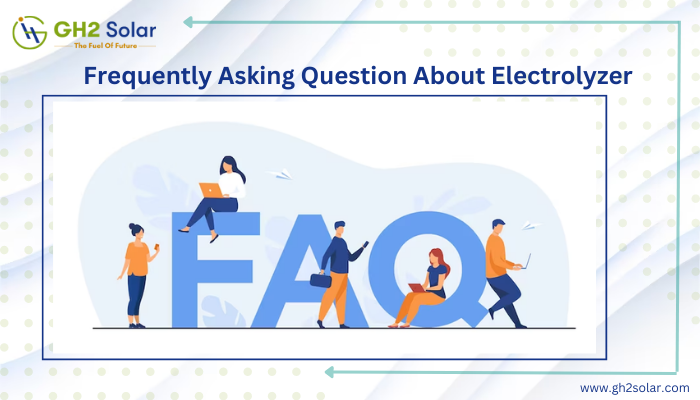Are you looking for Investment Opportunities in Indian green hydrogen industry? Yes you are at right place to gather right information and other factors also. Green hydrogen has become a viable alternative as the globe looks for greener and more sustainable energy sources. The rising demand for green hydrogen in India promises considerable investment potential.
The Indian market for green hydrogen is expected to grow significantly, offering interesting investment prospects for those with a forward-thinking mindset.
This blog delves into the reasons behind the surge in interest, highlights the potential of the Indian market, and uncovers the exciting investment prospects that lie ahead.
Overview of the Indian Green Hydrogen Market
For the green hydrogen industry, India is preparing a $2 billion incentive program. India could reduce industrial coal imports by 95% and total CO2 emissions by 3.6 gigatonnes by adopting green hydrogen between now and 2050. India wants to create hydrogen valleys, which are regions that would serve as centers for the production and use of green hydrogen. To develop a self-sustaining hydrogen ecosystem, these valleys will enable economies of scale, encourage R&D, and draw private sector investment.
Investments in this industry can be made through the Foreign Venture Capital Investor (FVCI) method, increasing investor flexibility. India will need to invest roughly $100 billion to produce MTPA’s green hydrogen. By doing this, carbon emissions would be decreased by 1.6%, natural gas imports would be decreased by 68%, and yearly energy import costs would be reduced by roughly INR 40,000 Cr. India can reduce the price of green hydrogen by utilizing inexpensive renewable energy sources and the expertise with cost-curtailment garnered from solar and wind reverse auctions.
Investment Landscape
The investment potential in green hydrogen infrastructure development in India
India still requires considerable expenditures to upgrade its infrastructure and enhance its technologies to overcome obstacles including high costs, supportive legislation, and difficulty luring in outside capital. India will need to invest roughly $100 billion to produce MTPA’s green hydrogen. US investments are anticipated if India’s intention to adopt hydrogen proceeds as expected.
Investment opportunities in green hydrogen production technologies, including electrolyzers and renewable energy integration
To become a center for the production and consumption of green hydrogen, India is working to create hydrogen valleys. To develop a self-sustaining hydrogen ecosystem, these valleys will enable economies of scale, encourage R&D, and draw private sector investment. Some of India’s largest businesses announced sizable investments in various sectors of the green hydrogen ecosystem last year. These were in the fields of supply and storage, as well as research and development, and involved building Giga factories for fuel cells and electrolyzers. The largest oil and gas producer and explorer in India, ONGC (Oil & Natural Gas Corporation), has made major strides to join the group of businesses producing green hydrogen in the country.
In July 2022, it struck an agreement with M/s Greenko ZeroC Private Limited to spend USD 6.2 billion on green hydrogen and renewable energy projects. India will need to invest roughly $100 billion to produce MTPA’s green hydrogen. India’s ability to build capacity to become the world’s least expensive hydrogen generator by 2050 is demonstrated by the National Hydrogen Energy Mission, which was declared in the union budget of India for 2021–22. This will support the creation of a collection of just, beneficial, and priceless future solutions.
Incentives for eco-friendly hydrogen generation technologies like electrolyzers and the incorporation of renewable energy have also been offered by the Indian government. Interstate transmission fees have been eliminated by the government, and GH2 facilities now have unrestricted access to the grid.
The importance of collaborations and partnerships in the sector
Partnerships and collaborations are essential for the development of the green hydrogen market. The Indian government has announced partnerships with other nations, including Japan, Australia, and the United States, to advance green hydrogen research and development. The National Hydrogen Energy Mission seeks to establish a self-sustaining ecosystem for the generation and use of environmentally friendly hydrogen. Collaborations across the public, business, and academic sectors will be necessary for this.
Collaborations between businesses are also significant in addition to this. For instance, to create a green hydrogen ecosystem in India, Reliance Industries Limited (RIL) and Chart Industries, a US-based company, have inked an MoU. Similarly to this, Tata Power and Tata Motors have teamed up to install a solar carport at their Pune facility to produce green energy for their operations.
Key Sectors and Applications for green hydrogen in India
Green hydrogen has a wide range of applications across various sectors in India. Some of the key sectors and applications for green hydrogen in India are:
- Transportation: Green hydrogen can be used as a fuel for transportation. It can be used to power fuel cell electric vehicles (FCEVs) and heavy-duty vehicles such as buses and trucks.
- Power Generation: Green hydrogen can be used to generate electricity through fuel cells. Fuel cells are highly efficient and produce electricity with zero emissions.
- Industrial Processes: Green hydrogen can be used as a feedstock for various industrial processes such as ammonia production, methanol production, and steel production.
- Heating and Cooling: Green hydrogen can be used for heating and cooling applications in buildings.
- Energy Storage: Green hydrogen can be used as an energy storage medium to store excess renewable energy generated from wind and solar power plants.
The challenges and risks associated with investing in the Indian green hydrogen market
The Indian green hydrogen market is still in its infancy and confronts several difficulties and dangers. The following are some of the main difficulties and dangers of making investments in the Indian green hydrogen market:
- High Capital Costs: The capital costs associated with setting up green hydrogen production facilities are high. This is due to the high cost of electrolyzers, which are used to produce green hydrogen.
- Infrastructure Development: The development of infrastructure for green hydrogen production, storage, and distribution is still in its early stages in India. This requires significant investment in infrastructure development.
- Regulatory Uncertainties: The regulatory framework for green hydrogen is still evolving in India. This creates uncertainties for investors and makes it difficult to plan long-term investments.
- Competition from Fossil Fuels: Fossil fuels such as coal and natural gas is still cheaper than green hydrogen. This makes it difficult for green hydrogen to compete with fossil fuels on cost.
- Lack of Skilled Manpower: The development of the green hydrogen sector requires skilled manpower. However, there is currently a shortage of skilled manpower in this sector.
Despite these challenges and risks, the Indian government has announced several initiatives to promote the growth of the green hydrogen sector. These include tax incentives, subsidies, and collaborations with other countries.
We At GH2 Solar
GH2 Solar a developer company for green hydrogen as well as solar projects that are set to revolutionize the energy industry. It’s cutting-edge technology and extensive experience in the field have enabled us to work with some of the biggest government companies to bring sustainable energy solutions to the market. If you are planning to adopt Green Hydrogen, you can connect with GH2 Solar to get all information about the same.
For more updates, follow us on Linkedin








